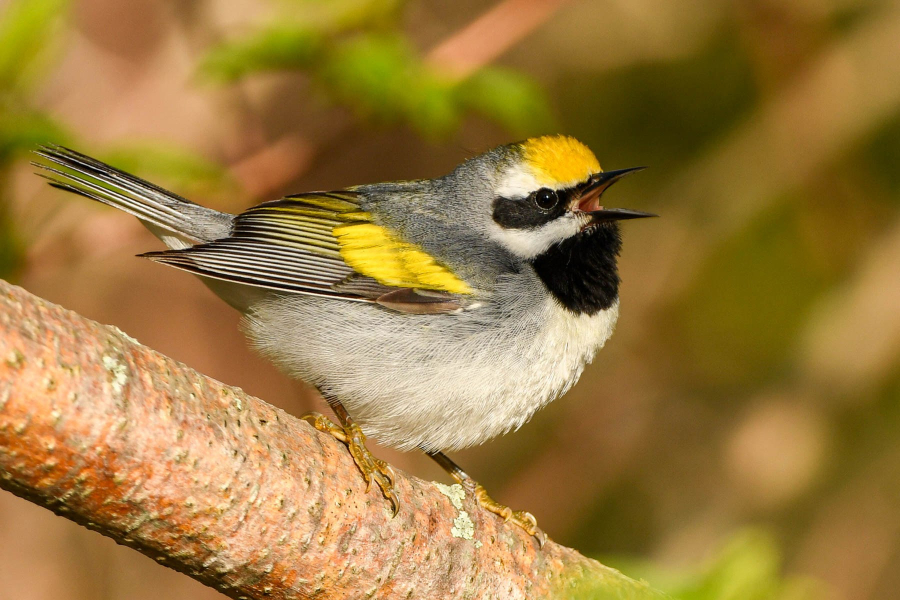With its unique look and distinctive song, this bird is a golden find
Golden-winged warblers face the threat of habitat loss

The golden-winged warbler, a gray bird with vibrant yellow flashes throughout its small body, can be found in the Chesapeake Bay region as it migrates between breeding grounds in the northern U.S. and overwintering grounds in Central and South America. This beautiful bird is one of the most imperiled in North America, which makes it sought after by birdwatchers and conservationists alike.
Unlike many other warblers, who prefer dense forests, this species thrives in areas that have a mix of open ground, shrubs and young trees. Transitional zones between forested and open areas, also known as successional habitat, are the perfect habitat for the golden-winged warbler as it offers dense shrubs for foraging and open land for nesting and breeding.
However, this type of habitat is frequently disrupted by development, logging and invasive plant species—in both the Chesapeake and across North America. Another threat to the golden-winged warbler is the hybridization risks from the similar blue-winged warbler. The two species' overlapping territories and mating habits have led to the creation of hybrid offspring, which can reduce the genetic diversity and survival chances of the pure golden-winged warbler.
Because of these threats, golden-winged warblers numbers have declined nearly 70% in the past 50 years. In the Chesapeake Bay watershed, the bird historically breeds in the Appalachian region, and much of Pennsylvania and New York. It commonly migrates along the Appalachian mountains, and less commonly farther east in central Maryland, Virginia and Delaware.
Across the country, conservationists are focused on preserving the golden-winged warbler’s habitat. Environmental groups work with farmers and landowners to manage their property in a way that allows for young, successional forests to grow.
This successional habitat provides nesting and foraging grounds not just for golden-winged warblers but other species native to the Chesapeake like northern bobwhite, ruffed grouse and the American woodcock. Successional habitat is also critical to forests in general as they make them more diverse and resilient.
To learn more about other birds that visit the Chesapeake Bay region, visit our field guide.

Comments
There are no comments.
Thank you!
Your comment has been received. Before it can be published, the comment will be reviewed by our team to ensure it adheres with our rules of engagement.
Back to recent stories